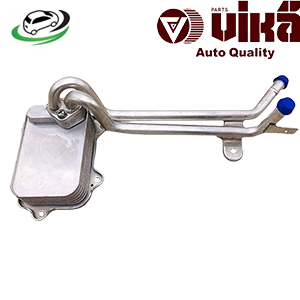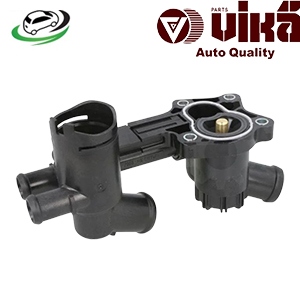-6%
Part No: 03C121065F
Brand: VIKA
Fits: Audi A1 2011-2014 / VW Jetta


Audi A1 2011-2014 / VW Jetta Coolant Pipe 03C121065F
Part No: 03C121065F
Brand: VIKA
Fits: Audi A1 2011-2014 / VW Jetta
KShs5,500 Original price was: KShs5,500.KShs5,150Current price is: KShs5,150.
Payment Methods:
Coolant pipes are crucial components in an automobile’s cooling system, responsible for transporting coolant between the engine, radiator, and heater core. Properly functioning coolant pipes help maintain optimal engine temperatures, prevent overheating, and ensure efficient performance. This comprehensive discussion will explore the function of coolant pipes, their importance, types, common issues, maintenance practices, and their impact on vehicle performance.
Coolant pipes are tubes or hoses that facilitate the movement of coolant throughout the engine cooling system. They are typically made from durable materials that can withstand high temperatures and pressures, including rubber, silicone, or metal. These pipes connect various components of the cooling system, including the engine, radiator, thermostat, and heater core.
The primary function of coolant pipes is to transport coolant from the engine to the radiator and vice versa. As the engine operates, it generates heat, which the coolant absorbs. The coolant then flows to the radiator, where it releases heat into the atmosphere before returning to the engine to repeat the cycle. This continuous flow helps maintain optimal engine temperatures.
Coolant pipes play a critical role in regulating engine temperature. By facilitating the flow of coolant, they help dissipate excess heat generated by the engine during operation. Maintaining the engine at an optimal temperature is vital for performance and longevity.
In addition to cooling the engine, coolant pipes also transport coolant to the heater core, which is responsible for heating the cabin of the vehicle. By supplying hot coolant to the heater core, coolant pipes enable the vehicle’s heating system to function effectively.
One of the most important functions of coolant pipes is to prevent engine overheating. If coolant cannot flow freely through the system due to blockages or leaks, the engine can quickly reach dangerous temperatures, leading to potential damage or failure. Properly functioning coolant pipes are essential for preventing overheating.
By regulating engine temperature and preventing overheating, coolant pipes contribute significantly to the longevity of the engine. Overheating can cause severe damage, including warped cylinder heads, blown gaskets, and engine seizures. Maintaining a stable temperature is crucial for extending the life of the engine.
Coolant pipes help ensure that the engine operates efficiently. An engine running at optimal temperatures performs better, resulting in improved fuel efficiency and power output. Properly functioning coolant pipes help maintain this efficiency.
An overheating engine can lead to catastrophic failures, potentially causing accidents or leaving drivers stranded. Well-maintained coolant pipes help prevent overheating, enhancing the overall safety of the vehicle.
Coolant pipes are also integral to the vehicle’s heating system. By supplying hot coolant to the heater core, they allow the cabin to warm up quickly, providing comfort to passengers in cold weather. A malfunctioning coolant pipe can lead to inadequate heating, affecting passenger comfort.
Metal coolant pipes are typically made from aluminum or steel and are known for their durability and resistance to high temperatures. These pipes are commonly found in older vehicles or high-performance applications where strength and heat resistance are crucial. They are less prone to swelling or deterioration compared to rubber or silicone hoses.
Rubber coolant hoses are flexible and commonly used in modern vehicles. They are designed to withstand high temperatures and pressures but can degrade over time due to heat, exposure to chemicals, and aging. Regular inspections are necessary to check for signs of wear, cracking, or swelling.
Silicone coolant hoses are becoming increasingly popular due to their durability and resistance to heat and chemicals. They offer greater flexibility than rubber hoses and can withstand higher temperatures, making them suitable for high-performance applications. Silicone hoses tend to have a longer lifespan than rubber hoses.
Heater hoses are a specific type of coolant pipe that connects the engine to the heater core. They transport hot coolant to the heater core, allowing the vehicle’s heating system to function. Like other coolant hoses, heater hoses can be made from rubber or silicone.
Coolant leaks are one of the most common issues associated with coolant pipes. Leaks can occur due to wear and tear, corrosion, or damage from road debris. A leak can lead to low coolant levels, causing the engine to overheat. Regular inspections are essential to detect leaks early.
Over time, coolant pipes can become brittle or develop cracks, especially if made from rubber or silicone. Exposure to heat, chemicals, and ozone can accelerate this deterioration. Cracked coolant pipes can lead to coolant loss and overheating.
Blockages in coolant pipes can occur due to the buildup of sludge, debris, or corrosion. These blockages can restrict the flow of coolant, leading to overheating and reduced engine performance. Regular flushing of the cooling system can help prevent blockages.
Loose connections at the junctions of coolant pipes can lead to leaks or reduced coolant flow. It’s important to check and tighten any hose clamps and connections during routine maintenance to ensure a secure fit.
Regular inspections of coolant pipes are crucial for identifying potential issues before they escalate. Check for signs of leaks, cracks, or corrosion. Pay close attention to connections and hose clamps, ensuring they are secure.
Keep an eye on the coolant reservoir and radiator for signs of low coolant levels. If the levels drop significantly, it may indicate a leak or other issue within the cooling system that requires attention.
Flushing the cooling system regularly can help remove contaminants, sludge, and rust that may accumulate in coolant pipes. This maintenance practice improves coolant flow and efficiency, reducing the risk of blockages.
If any coolant hoses show signs of wear, cracking, or deterioration, replace them immediately. It’s often recommended to replace coolant hoses every five years or as specified by the vehicle manufacturer.
Inspect metal coolant pipes for signs of corrosion, especially in older vehicles. Corrosion can weaken the pipes and lead to leaks. If corrosion is detected, it may be necessary to replace the affected pipes.
Coolant pipes are integral to the efficient operation of an automobile’s cooling system, playing a vital role in regulating engine temperature and preventing overheating. By transporting coolant throughout the engine and associated components, they help ensure optimal performance, enhance engine longevity, and contribute to overall vehicle safety.
Understanding the function and importance of coolant pipes allows vehicle owners to appreciate their role in maintaining engine health and performance. Regular inspections, maintenance, and prompt attention to any issues are essential for ensuring the proper functioning of coolant pipes and the cooling system as a whole.
Whether you’re a casual driver or an automotive enthusiast, recognizing the value of coolant pipes can enhance your overall automotive knowledge and help keep your engine running smoothly for years to come. Properly maintained coolant pipes ensure that the engine operates at the ideal temperature, improving fuel efficiency, performance, and comfort for drivers and passengers alike.
Follow us on Facebook for more parts.
You must be logged in to post a review.
No account yet?
Create an AccountTEAM ONESTOP
Typically replies within minutes
Looking for parts?

Stanley Sales
German Parts Specialist
Rose, Sales
Toyota, Mazda, Ford Specialist
Esther Sales
Honda, Mitsubishi, Suzuki Specialist

Muthoni Sales
Nissan, Subaru, Renault Specialist
Moraa, Garage Admin
Garage Admin
🟢 Online
WhatsApp us
Reviews
Clear filtersThere are no reviews yet.